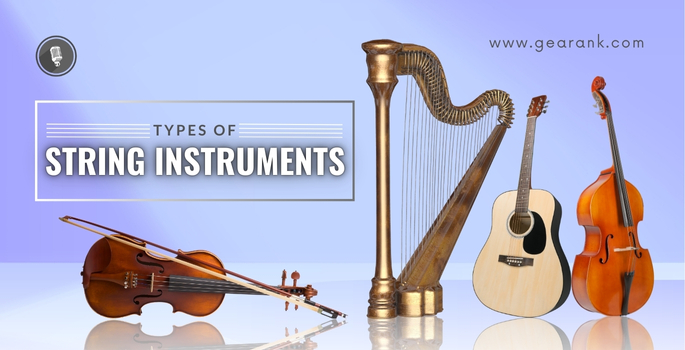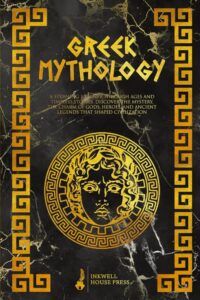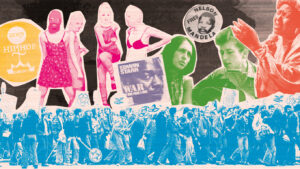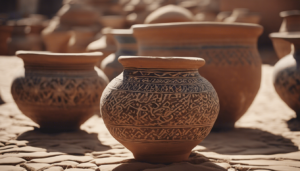Traditional instruments are experiencing a notable resurgence in contemporary music, contributing to modern compositions with their distinct textures and cultural significance, enriching world music with rhythmic diversity and melodic patterns.
This article delves into the captivating realm of these instruments, analyzing their role in the preservation of cultural heritage, enhancement of musical experimentation, and promotion of fusion across diverse music genres and cross-genre blending.
It underscores iconic examples, discusses innovative instrumentation techniques of incorporation, and addresses the challenges associated with merging traditional elements with contemporary influences, including the balance between acoustic sound and electronic music.
We invite you to explore the dynamic interplay between tradition and modernity in the current music landscape, where musical adaptation and genre evolution continue to shape artistic expression.
What Are Traditional Instruments?
.jpg_00.jpeg)
Traditional instruments are musical tools that have been handed down through generations, embodying the rich cultural heritage, musical identity, and artistic expression of diverse communities across the globe.
Typically crafted from natural materials and characterized by unique acoustic properties, these instruments play a vital role in distinct folk music traditions that reflect the historical context and social narratives of their origins.
Their application extends across various musical genres, emphasizing the rhythmic patterns and melodic structures inherent to different cultures, while also functioning as a medium for musical storytelling and cultural representation.
Why Are Traditional Instruments Being Used in Contemporary Music?
Traditional instruments are increasingly utilized in contemporary music to create a harmonious fusion of sounds that both honors cultural heritage and embraces modern musical innovation.
This integration enables artists to explore diverse musical landscapes and sonic textures, thereby enriching contemporary compositions with the depth and authenticity of traditional melodies.
The combination of acoustic sounds with contemporary production techniques not only revitalizes these traditions but also provides new avenues for artistic expression and community engagement through innovative music festivals, collaborative projects, and live performances, enhancing the audience experience.
1. Preservation of Cultural Heritage
The incorporation of traditional instruments in contemporary music is essential for the preservation of cultural heritage, enabling musicians to maintain a connection to their roots and musical identity while engaging with global audiences. This preservation effort is crucial for fostering community engagement and ensuring that cultural narratives remain vibrant and relevant in an increasingly digital landscape.
These instruments often embody stories and histories that reflect the diversity of human experience, serving as connections between generations. Community workshops and music therapy initiatives, particularly in multicultural environments, not only underscore the significance of traditional music but also facilitate individuals’ connections with their cultural backgrounds.
Educational programs that integrate folk songs and storytelling frequently encourage participants to embrace their heritage, leading to a profound appreciation for the artistry and musical diversity involved. By emphasizing these initiatives, it becomes evident that the use of traditional instruments in this context is vital for nurturing a sense of belonging and cultural pride.
2. Adding Unique Sounds and Textures
Traditional instruments contribute distinctive sounds and textures to contemporary music, thereby enriching the overall auditory experience and providing layers of complexity that modern instrumentation alone may not achieve, showcasing unique sounds and sonic landscapes.
Their unique sonic qualities enhance orchestration, allowing composers and performers to explore various rhythmic patterns and melodic structures.
The incorporation of instruments such as the sitar, oud, or kalimba introduces new avenues for sonic experimentation, effectively blurring the lines between genres. The warm resonance of a cello or the vibrant timbre of a marimba can evoke emotions deeply rooted in the cultural contexts from which these instruments originate.
By utilizing their acoustic characteristics, musicians can craft soundscapes that not only engage listeners’ auditory senses but also challenge their perceptions, fostering a deeper sensory experience.
This fusion of traditional sounds with modern techniques broadens the musical palette and invites audiences to engage with the music on a more profound level, ultimately fostering innovation in sound design and production.
3. Experimentation and Fusion
The integration of traditional instruments with contemporary music frequently results in compelling experimentation, where artists engage in cross-cultural exchanges and genre blending that expand the horizons of musical innovation.
This creative collaboration fosters an environment conducive to improvisation and spontaneous artistic expression, allowing musicians to investigate new rhythmic patterns, genre characteristics, and harmonic development.
Events such as music festivals provide a vibrant platform for showcasing these collaborative projects, uniting diverse artists who incorporate traditional melodies with modern beats, promoting intercultural collaboration and artistic innovation.
For example, the use of sitars or djembe drums within electronic or jazz contexts illustrates how cultural heritage can enrich contemporary soundscapes, bridging traditional forms with avant-garde and art music styles.
These innovative performances not only celebrate musical diversity but also promote cultural representation, enabling audiences to appreciate the depth that arises from such artistic partnerships.
As musicians explore and adapt to each other’s styles, they redefine genres, demonstrating that collaboration is essential for unlocking new and dynamic methods of emotional expression through music, exemplifying creative diversity and genre fusion.
Examples of Traditional Instruments in Contemporary Music
.jpg_01.jpeg)
Numerous contemporary artists have effectively incorporated traditional instruments into their music, resulting in evocative soundscapes that resonate with audiences while emphasizing the cultural significance of these instruments and their contribution to artistic collaboration and musical experimentation.
Notable examples of musical adaptation include:
- the sitar featured in The Beatles’ “Norwegian Wood,”
- bagpipes in AC/DC’s “It’s a Long Way to the Top (If You Wanna Rock ‘n’ Roll),”
- and the didgeridoo in Tones and I’s “Dance Monkey.”
Each of these instances demonstrates the profound global influences of traditional sounds in modern music, illustrating the role of music history and cultural preservation.
1. Sitar in Beatles’ ‘Norwegian Wood’
The use of the sitar in The Beatles’ ‘Norwegian Wood’ exemplifies the successful integration of traditional instruments into contemporary music. This incorporation introduces listeners to the rich sounds of Indian culture while simultaneously demonstrating the band’s willingness to experiment with new musical influences.
This particular application of the sitar not only underscores the band’s innovative spirit but also signifies a pivotal moment in the 1960s, a decade marked by a growing interest in Eastern philosophies, musical narratives, and music. By integrating such a distinctive sound, the track engages audiences on multiple levels—encouraging exploration of cultural diversity and musical storytelling while retaining a familiar pop aesthetic.
This fusion acts as a conduit for Western listeners to appreciate Indian music and its intricate rhythms and melodies.
Such collaborations are indicative of a broader trend in contemporary music, where artists increasingly draw from diverse cultural backgrounds. This practice ultimately enriches the global musical landscape and fosters a deeper understanding and appreciation of various traditions.
2. Bagpipes in AC/DC’s ‘It’s a Long Way to the Top (If You Wanna Rock ‘n’ Roll)’
AC/DC’s “It’s a Long Way to the Top (If You Wanna Rock ‘n’ Roll)” prominently incorporates bagpipes, effectively bridging the divide between rock music and traditional folk sounds, thereby enriching the contemporary sound with cultural heritage.
This distinctive instrumentation not only adds a layer of complexity to the composition but also establishes a tone that resonates with both music purists and modern rock enthusiasts. The bagpipes serve as a powerful symbol of connection, inviting listeners into a musical dialogue that celebrates both tradition and innovation.
When performed live, audience reactions often escalate to a fervor that underscores the emotional depth conveyed by these instruments, transforming the song into an anthem for those pursuing their aspirations.
This synergy between bagpipes and rock elements enhances the band’s artistic expression, enabling them to push boundaries and create a sound that is both nostalgic and contemporary, showcasing sound integration and thematic motifs that resonate with audiences.
3. Didgeridoo in Tones and I’s ‘Dance Monkey’
In Tones and I’s “Dance Monkey,” the incorporation of the Didgeridoo introduces a distinct layer of depth to the contemporary sound, exemplifying the potential of sonic experimentation and the integration of global influences within modern compositions.
The deep, resonant tones of this traditional Australian instrument not only enhance the track’s auditory landscape but also act as a bridge connecting diverse musical heritages. By intertwining the Didgeridoo’s earthy sounds with the vibrant tapestry of pop, the artist encourages listeners to engage in a cultural dialogue that transcends geographical boundaries, fostering cultural exchange and sonic heritage.
This incorporation is not merely a novelty; it reflects a broader trend within contemporary music, wherein artists increasingly draw inspiration from a variety of cultural legacies, thereby contributing to the evolution of sound and fostering an appreciation for global artistry, sound experimentation, and innovative sounds.
Such intersections cultivate an environment where innovation flourishes, prompting listeners to interact with music that embodies a richer, more inclusive narrative, emphasizing the importance of cross-cultural collaboration and performance practices.
How Are Traditional Instruments Being Incorporated into Contemporary Music?
Traditional instruments are increasingly being integrated into contemporary music through a variety of methods, such as live performances, sampling, and collaborations with traditional musicians.
Each of these approaches contributes to the rich tapestry of modern sound. This integration enables the emergence of diverse musical genres that blend acoustic elements with electronic music, thereby fostering musical innovation and rhythmic diversity within the industry.
1. Live Performance
.jpg_10.jpeg)
Live performances that feature traditional instruments provide audiences with a distinctive auditory experience that fosters engagement and promotes a musical dialogue between performers and spectators.
These events not only emphasize the rich cultural narratives embedded in each note and rhythm but also cultivate an exhilarating atmosphere where improvisation and musical storytelling can flourish.
For example, festivals such as the World Sacred Music Festival in Morocco and the Edinburgh International Festival showcase exceptional collaborations among artists who skillfully blend traditional sounds with contemporary elements, offering a fusion of instrumentation.
Such gatherings encourage audiences to engage with the artistry, allowing them to observe the spontaneous nature of musical improvisation and the profound connections that develop between diverse cultures.
This synergy enhances the performance, transforming it into a communal experience that celebrates the power of music as a universal language.
2. Sampling and Digital Manipulation
Sampling and digital manipulation of traditional instruments have emerged as significant techniques in contemporary music production, enabling artists to integrate historical sounds into modern compositions in a creative manner.
This innovative approach allows musicians to construct entirely new audio experiences by recontextualizing familiar melodies and rhythms. By layering samples from diverse genres, artists can transcend the constraints of conventional songwriting, resulting in unique soundscapes that evoke both nostalgia and avant-garde elements.
Digital tools enhance the texture and depth of these traditional sounds, facilitating an exploration of various musical forms that challenge established boundaries. As artists engage in intricate sound design and genre blending, they not only redefine the creative process but also expand listeners’ perceptions of what constitutes music and artistic expression.
3. Collaborations with Traditional Musicians
Collaborations with traditional musicians present a significant opportunity for cross-cultural exchange, introducing contemporary music audiences to the depth and authenticity of the cultural sounds embodied by traditional instruments.
By integrating diverse musical styles, these partnerships act as a bridge between different eras and traditions, fostering innovation and new artistic expressions.
For example, when contemporary artists such as Yo-Yo Ma collaborate with traditional musicians from various regions, the resulting fusion generates a vibrant dialogue that accentuates the unique nuances of each culture.
Such collaborations not only pay homage to the origins of these musical forms but also encourage listeners to delve into the importance of heritage and folk traditions in the current landscape. This exchange promotes understanding, allowing artists to redefine their work while embracing the universal language of music, thereby enriching the listening experience for audiences worldwide.
Challenges and Controversies Surrounding the Use of Traditional Instruments in Contemporary Music
The incorporation of traditional instruments in contemporary music frequently presents challenges and controversies, particularly regarding issues of cultural misrepresentation and appropriation.
Such practices can compromise the artistic integrity and cultural significance of these instruments. As artists engage with the complexities of integrating these sounds, it is crucial to approach their utilization with respect and a heightened sense of awareness, considering cultural influences and heritage preservation.
1. Appropriation and Cultural Misrepresentation
One of the primary concerns regarding the use of traditional instruments in contemporary music is the potential for appropriation and cultural misrepresentation, which may dilute the authentic narratives behind these sounds.
Such actions can obscure the rich histories and significance that these instruments hold within their cultural contexts. The incorporation of traditional elements into modern compositions must be approached with a thorough understanding and appreciation for their origins; failing to do so risks perpetuating stereotypes and undermining the artistry inherent in these practices.
Musicians should acknowledge the cultural heritage of the sounds they employ, ensuring that they respect the traditions from which they draw inspiration. By emphasizing ethical considerations and fostering an honest dialogue about cultural influences, artists can contribute to a more enriched musical landscape that honors the past while facilitating creative evolution and genre fusion.
2. Balancing Traditional and Modern Elements
.jpg_11.jpeg)
Balancing traditional and modern elements in contemporary music is a nuanced undertaking that requires artists to carefully navigate the complexities of musical evolution while respecting the cultural significance of traditional instruments.
For many musicians, this challenge extends beyond technical considerations; it is profoundly personal, influencing their musical identity and the manner in which they engage with their audience. The intersection of genre experimentation and artistic expression fosters creativity, yet it also poses the risk of alienating listeners who may prefer more conventional sounds.
Artists must thoughtfully integrate modern production techniques with authentic folk melodies, ensuring that the resulting sound remains true to their roots while appealing to contemporary tastes.
This delicate balancing act has the potential to create a richer listening experience, fostering broader audience engagement while preserving the essence of the genres they represent, through creative diversity and sound fusion.
Frequently Asked Questions
What is traditional music and how is it different from contemporary music?
Traditional music refers to the music that has been passed down through generations and reflects the cultural heritage of a specific group of people. Contemporary music, on the other hand, is more modern and often incorporates elements from various genres.
How are traditional instruments being used in contemporary music?
Traditional instruments are being used in contemporary music by incorporating their unique sounds and techniques into modern compositions. This can range from sampling traditional instrument recordings to live performances with a fusion of traditional and modern elements.
Why are contemporary musicians incorporating traditional instruments into their music?
Contemporary musicians are incorporating traditional instruments into their music to add depth and authenticity to their compositions. It also allows them to explore new sounds and expand their musical repertoire.
Is there a specific genre of contemporary music that heavily features traditional instruments?
While traditional instruments can be found in various genres of contemporary music, there are some genres that heavily feature them. These include world music, folk music, and fusion genres such as jazz fusion and world fusion.
How has the use of traditional instruments in contemporary music impacted the preservation of cultural heritage?
The use of traditional instruments in contemporary music has helped to preserve cultural heritage by introducing younger generations to these instruments and their significance in traditional music. It also helps to keep these instruments relevant and ensures they are not forgotten over time.
Are there any challenges faced when incorporating traditional instruments into contemporary music?
Yes, there can be challenges when incorporating traditional instruments into contemporary music. It may require a certain level of skill and knowledge to properly use traditional instruments in a modern context, and there may also be cultural sensitivities to consider when fusing traditional and contemporary elements.

My name is Bruno, I have been a writer for 5 years and I work with website creation. My goal is to provide true information to readers. In fact, on this site I write about cultures and traditions, which I have been passionate about since childhood.




